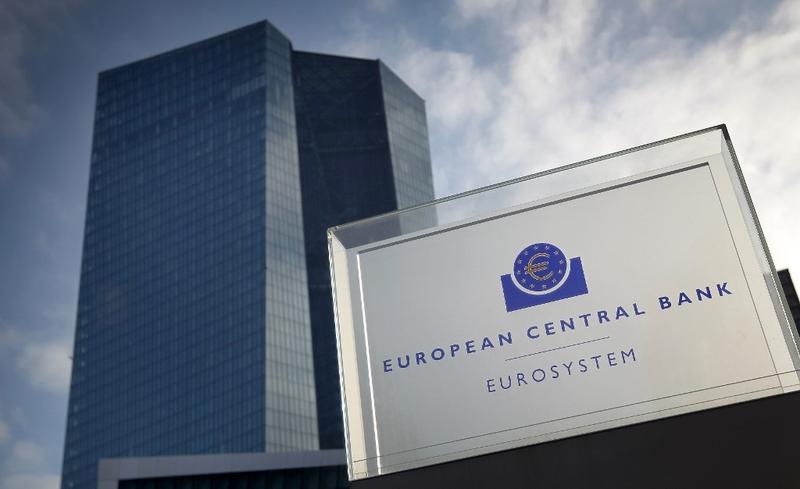 This photo taken on Jan 23, 2020 shows the headquarters of the European Central Bank in Frankfurt, Germany. (DANIEL ROLAND / AFP)
This photo taken on Jan 23, 2020 shows the headquarters of the European Central Bank in Frankfurt, Germany. (DANIEL ROLAND / AFP)
FRANKFURT — The European Central Bank (ECB) is all but certain to unveil new stimulus measures on Thursday, pushing policy closer to its limits to help the euro zone economy cope with the shock of the coronavirus pandemic.
With millions of people in lockdown, markets in turmoil and companies struggling with disrupted supply chains, the economy is already reeling, piling pressure on the ECB to roll out much of what it has left in its depleted policy arsenal.
Emergency rate cuts by the US Federal Reserve and the Bank of England signal an urgent push to quell fears that the epidemic and associated market panic could quickly trigger a recession, dealing another blow to the struggling currency bloc.
None of these monetary measures will stop the spread of the virus. But they are among the best measures to prevent the economic damage being even more severe in potential second-round effects
Florian Hense, Economist, Berenberg
ALSO READ: Global stocks plunge into bear market after US' Europe travel ban
The crisis is a major test for ECB chief Christine Lagarde, who took over only in November and has billed herself as the “wise owl” of monetary policy.
The ECB is almost certain to provide new, ultra-cheap loans for banks to pass onto small and medium-sized firms, sources told Reuters. It is also likely to debate an interest rate cut, though such a step is far from certain.
While markets have priced in a 10 basis point move, rates are already at a record low of minus 0.5 percent and many policymakers have said further cuts could be counterproductive because they hurt bank margins to the point of thwarting lending.
Acting counter to market expectations and rate cuts elsewhere would risk fuelling market turbulence, however, undercutting the very purpose of the bank’s stimulus package. It could also push the euro higher, putting downward pressure on inflation, an uncomfortable prospect given anaemic price growth.
The ECB could also discuss stepping up asset purchases to keep corporate borrowing costs in check and relieve pressure on sovereign bond spreads, which have widened sharply as investors flee weaker sovereigns such as Italy, Spain and Portugal.
“None of these monetary measures will stop the spread of the virus. But they are among the best measures to prevent the economic damage being even more severe in potential second-round effects,” Berenberg economist Florian Hense said.
The World Health Organization described the coronavirus as a pandemic for the first time on Wednesday, saying other countries would soon join Italy and Iran on the frontline of the disease.
President Donald Trump meanwhile imposed restrictions to prevent people from 26 European countries from traveling to the United States for a month.
Euro zone stock futures were sharply lower early on Thursday while German bond futures rose, suggesting investors were running for cover in assets they deemed safer. The euro was up 0.3 percent at US$1.30 but below a one-year high hit this week.
SPEND, SPEND, SPEND
In an unusual move, the ECB’s bank supervision arm, which is supposed to act separately from monetary policy, is also expected to outline ways it is prepared to help the financial sector cope, sources told Reuters.
But Lagarde, who has encouraged ECB staff to work from home if they wish to, will also stress that it is up to governments to react to the epidemic and that they should use their budget leeway, a more powerful weapon than whatever the ECB can offer.
She has already told EU leaders that inaction could lead to the sort of calamity seen during the 2008 global financial crisis.
“I share the view of Christine Lagarde, I must take it very seriously,” German Chancellor Angela Merkel said. “We will do what we need to get through this.”
Many economists expect Germany, Europe’s economic powerhouse, to be in recession in the first half of this year and some predict a similar outturn for the entire bloc.
While the ECB is keen to help, it has already used up its most powerful weapons in nearly a decade of stimulus. Interest rates are at record lows, it has gobbled up 2.6 trillion euros (US$2.94 trillion) of mostly government debt and has for years offered essentially free cash to banks to keep them lending.
With rates so low, the ECB is already approaching the so-called reversal rate, a level where further cuts do more harm than good. Low rates are also fuelling housing bubbles which some policymakers argue could sow the seeds of a future crisis.
“The widespread notion in the market that a decisive ECB president needs to ‘surprise’ the market with even more than it expects, can no longer apply: first, the limits of what is possible are closer now than they were a few years back and second, the current crisis is different,” Barclays said.
READ MORE: ECB prepares some sub-zero relief for wilting Europe
“Hence, we think an owl-led ECB is likely to resist turning rates more negative at this juncture.”
Compounding the ECB’s headache, oil prices have crashed, a double-edged sword for rate-setters.
While lower crude prices boost growth and consumer purchasing power through lower fuel prices, they also drag inflation sharply lower — a problem as the ECB has undershot its target of almost 2 percent since 2013.
Some economists expect inflation to fall to zero this spring if crude prices stay at their current levels, raising fears of a damaging deflation spiral.
The ECB will also release fresh economic forecasts on Thursday as it does every three months, though the cut-off date for their underlying assumptions was before the worst of the market turmoil and the oil price crash.


